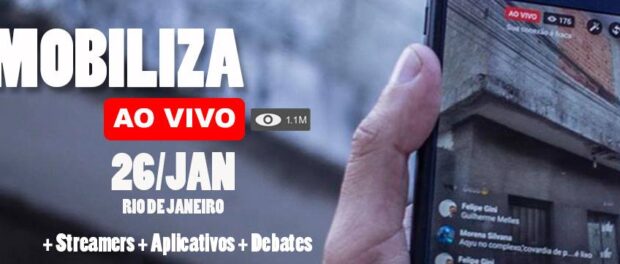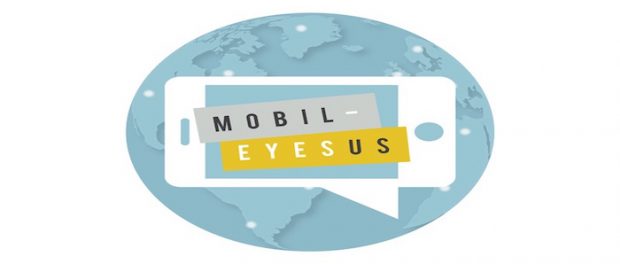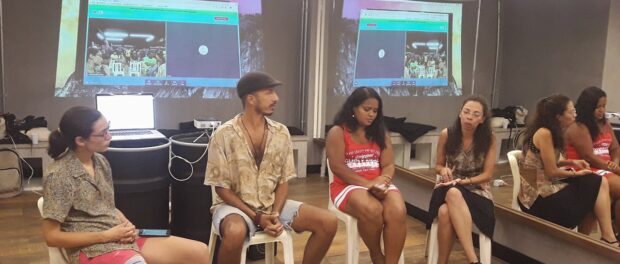
On Friday, January 26, representatives from the human rights organization Witness came together with Rio community activists to hold a live-stream training for favela residents and community journalists. Led by Witness’ Rio project leader, Clara Medeiros, the night’s event featured a workshop on live-streaming as a way to document human rights abuses and an expert panel of three of Rio de Janeiro’s prominent community activists.
Medeiros began the evening with a presentation on best practices in live-streaming and new methods to increase viewer engagement. She estimates that live transmissions get 40-50% more views than traditional posts and video, and Facebook’s algorithm allows streamers to maximize their viewership by actively engaging with viewers—that is, the more comments a live-stream gets, the more it gets promoted to wider audiences. This is significant for Witness’ mission of training citizens to effectively use video to document human rights violations. “The idea is to use live transmission as a tool for human rights,” she explained. The greater the exposure, the greater the potential impact.
But for Medeiros, live-streaming’s potential extends far beyond increased viewership. Besides awareness-raising, Witness hopes to promote the use of live-streams as potential evidence in court. To that end, streamers need help, Medeiros said: “The question for us is: how can the viewer help [the streamer] besides just giving likes and emojis?”
It was in response to this question that Witness launched the Mobil-Eyes-Us app, which allows viewers to support streamers in real-time—offering everything from translation to context explanation to legal advice, based on their particular skill sets. Medeiros explained that the app became particularly useful around the 2016 Rio Olympics, as it allowed Cariocas to “construct their own narrative arc” apart from what was gaining coverage from major media outlets and to have their live videos quickly translated into English.
The evening’s panelists attested to the power of live-streaming. Gizele Martins, from the Maré 0800 collective and numerous community journalism initiatives, found that live-streaming from abroad helped her dramatically increase her audience. “I spent two weeks in Palestine, where the removals are really similar… where there are several similarities with what we see here in the favelas.” Sharing video live from the Middle East and offering her perspective as a favela resident gained her international viewers as well as increased interest from Rio favelas outside of her native Complexo da Maré.
For Thainã de Medeiros of Coletivo Papo Reto, live-streaming proved instrumental to resisting police incursions in Complexo do Alemão in Rio’s North Zone. According to de Medeiros, as police began to take over people’s homes and even expel families in order to informally set up additional Pacifying Police Unit (UPP) bases just last year, community journalists took to the streets to live-stream the incident, even noting the license plates of those involved. Live-stream viewers quickly identified cars and the police responsible. As a result, the UPP commander was held accountable and was fired. “I have never seen such a strong civil society mobilization… We even took down the police commander,” de Medeiros remarked.
Also hailing from Alemão, Favela Art founder Mariluce Mariá Souza reinforced the need to use live-streaming not only to document and resist human rights abuses, but to show neighbors and community members that they are entitled to their basic human rights. “We want people to know that rights apply to the entire nation—not just to one piece of it,” she said. “We want to use live-streaming for this.”



